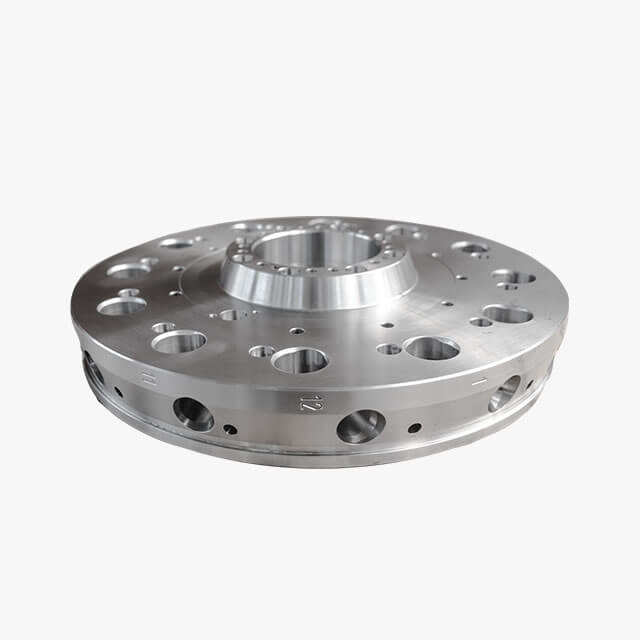The perpendicularity error between thread hole and base plane of fine thread is not more than 0.03mm; Thread accuracy shall be in accordance with 6h specified in GB 197; The thread surface shall be free of defects such as black skin, crack, bump, burr, double tooth tip and incomplete buckle; The depth of coarse thread is twice the diameter of thread (except for the drawing). Before processing the thread, the screw in side should be chamfered by 60?, The chamfer depth is equal to the bolt chamfer depth.
The oil hole in the oil circuit block should be in the whole range of working temperature and flow capacity of the system, so that the pressure drop caused by the fluid flowing through the channel will not adversely affect the efficiency and response of the system. According to the process requirements, the valve block is finely ground to make the surface roughness of the valve connection RA = 0.8 μ m. The roughness at the notch of the threaded hole is ra = 3.2 μ m. The rest RA = 6.3 μ m。
For the oil circuit block with cover type Manifold, the jack shall be processed according to the drawing accuracy; At the same time, the surface of valve block shall be protected from bumping and scratching. There shall be no marking marks or other marks on the surface of the processed valve block; 9、 Check the quality and function according to the construction drawings and corresponding hydraulic schematic diagram. Deburring the valve block hole.
The surface is treated by electroless nickel plating, and the thickness of the coating is 0.008 ~ 0.012mm. After the treatment, the valve block orifice shall be cleaned with kerosene without residual iron filings and other impurities; After the valve block is cleaned, the orifices are sealed with plastic plugs to prevent dirt from entering, and the valve block is placed in a clean and dry place; Each valve block shall be placed separately during transportation.
The oil circuit block is a collection of dispersed hydraulic oil circuits. Oil way block is simply a block to control the work of hydraulic oil. Usually made of metal. For a hydraulic system, the oil circuit block should be designed separately according to the hydraulic schematic diagram. Its advantage is to simplify the installation, repair, replacement and later maintenance of the hydraulic system. The disadvantage is that the design and processing requirements are high, and the single piece cost is high. It is not suitable for small batch production.
